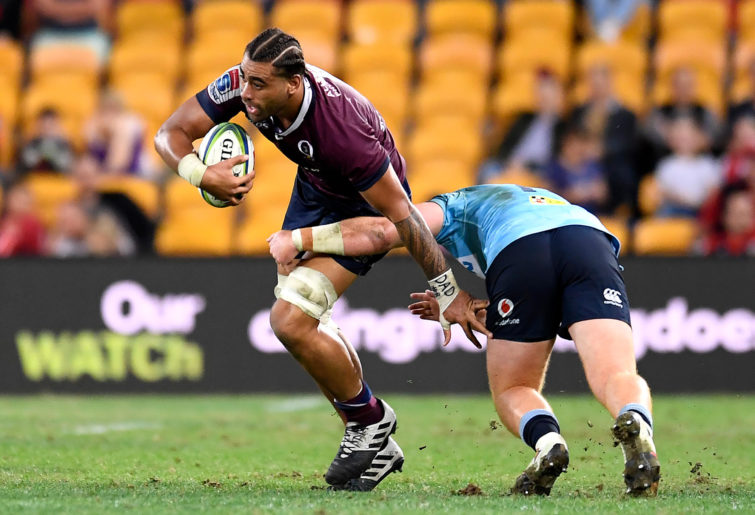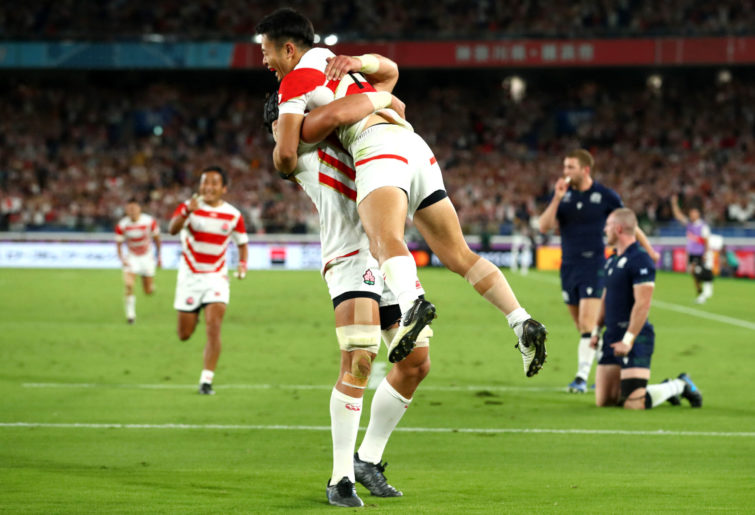Since 2013, the Australian Super Rugby audience has dropped by 43 per cent. That is according to the Gemba Group, a leading sports consultancy, as reported in the Sydney Morning Herald.
And that’s not even the bad news.
Within the 16 to 39-year-old demographic, the Super Rugby audience has deteriorated to the tune of 73 per cent. Talk about a fall from grace.
In Georgina Robinson’s Sydney Morning Herald article, Gemba recommended a “national club competition culminating in a state-based representative season should replace a ‘broken’ Super Rugby model in Australia”.
On Rugby Ruckus, Eddie Jones stated that “To me, Australia’s been a rugby community based on strong clubs, the strong clubs then fit into a provincial system that collects the best players and then those provincial teams play against each other to represent the Wallabies.”
It seems clear in some corners what Rugby Australia needs to do to reengage fans.
The problem is if RA waits too long, or gets the next model wrong, the game may never recover.
Take for instance reports Super Rugby is thinking of bringing the two top Japan Top League teams into a Super Rugby finals system. There would be some serious down side to this manoeuvre.
Instead, there is another path we could take: one that aligns Australian rugby with the Japan Top League and the lucrative Japanese market.

(Photo by Toru Hanai/Getty Images)
Currently, the Japan Top League is in direct competition with Australian Super Rugby. Many of our players have chosen to play in the Japan Top League at one time or another, including Adam Ashley-Cooper, Berrick Barnes, Matt Cockbain, Bernard Foley, Mark Gerrard, Matt Giteau, George Gregan, Nathan Grey, Digby Ioane, Toutai Kefu, Stephen Larkham, Ben McCalman, Sean McMahon, David Pocock, Joe Roff, George Smith and Craig Wing. It’s not just Australian talent either.
Us versus them does not necessarily have to be the case. We need to seek a Japan-Australian win-win scenario. For us, it is about raising our NRC and domestic rugby. For Japan, it is about international Test matches.
Consider this scheduling of competitions.
March 14 to May 9
Revamped National Rugby Championship involving Australia and Japan, with a top-five finals format
In addition to the franchises from Brisbane City (Reds), Sydney (Waratahs), the Brumbies, Western Force and Melbourne Rebels, the NRC would feature qualifiers from the Shute Shield and Queensland Premier Rugby. To bolster talent and better enable player payments, the competition would also feature qualifiers from the previous season’s Japan Top League.
The Japan Top League’s best players would therefore play both NRC (March-May) and Japan Top League (June-August), and vice versa when it does not conflict with Super Rugby.
Teams and pairing with Japan Top League talent would be as follows:
1. Brisbane City (current Reds franchise)
2. Sydney (current NSW Waratahs franchise)
3. Brumbies
4. Queensland Premier Rugby champion plus JTL team (rotates between first and second ranked team)
5. Shute Shield champion plus JTL team (rotates between second and first ranked team)
6. Shute Shield finalist plus JLT team (rotates between third, fourth, and fifth ranked team)
7. Melbourne Rebels plus JTL team (rotates between fourth, fifth and third ranked team)
8. Western Force plus JTL team (rotates between fifth, third, and fourth ranked team)
End of May to end of August
State of Origin between the Reds and the Waratahs
To assist in delivering on Super Rugby broadcast content, the best NRC players would be collected into three Australian teams: Queensland Reds, NSW Waratahs (also including the ACT), and a third Australia team termed the Swagmen (from the remaining states and territory).

(Photo by Albert Perez/Getty Images)
The Sunwolves would also field a team. With greater success, Australia may once again prefer four teams, but for now, let us stick with three.
Immediately after the grand final, a lone State of Origin game would be held between the Reds and Waratahs.
Super Rugby home-and-away season
New Zealand, South Africa and Argentina would not be disrupted during the regular home-and-away series. Prior to the Super Rugby finals, the Reds, Waratahs, Swagmen and Sunwolves Super Rugby teams would aim to complete seven regular-season Super Rugby games.
Super Rugby world championship finals
The finals involve two teams from each of Australia, New Zealand, South Africa and PRO14.
Ideally the Super Rugby finals should kick off with derbies and also field annual wildcard teams. As South African teams are in the PRO14, their grand finalists would be invited to compete in the first Super Rugby world championship.
In Week 1, the two finalists from each zone face off, with the loser eliminated. In Week 2, the Aussie and Kiwi winners face off, as do the South African and PRO14 victors. Week 3 is a bye for travel, before the decider in Week 4.
June to the end of August
Players not involved in the Super Rugby finals would return to play for their clubs in Japan, the Shute Shield or Queensland Premier Rugby.
And there it is folks.
It would be prudent for now to stow the pistols around the Japan Top League directly entering the Super Rugby finals.
Instead, offer them something they would truly cherish: international Tests against the big nations. As part of an Australia-Japan NRC alliance, Australia would offer a best-of-three Wallabies versus Japan Test series. But this is a series with a difference.

(Photo by Stu Forster/Getty Images)
Rugby is 100 years behind boxing. Heavyweights like Mike Tyson are powerful and ferocious. But the light middleweights light up the world also, such as Floyd Mayweather and Conor McGregor. The money speaks for itself.
Imagine a a cruiserweight division where height and body weight restrictions are put in place to provide a more competitive playing field for the smaller-bodied Japanese players.
What would the games look like? Faster and zippier like the World Cup, where Japan were a pleasure to watch?
What would the height and weight look like? Who knows. I will leave that one to the scientists. Perhaps average team height limit of 175 centimetres, and weight of 85 kilos?
Now that would be fan engagement in both the Australian and Japanese marketplaces.































































































